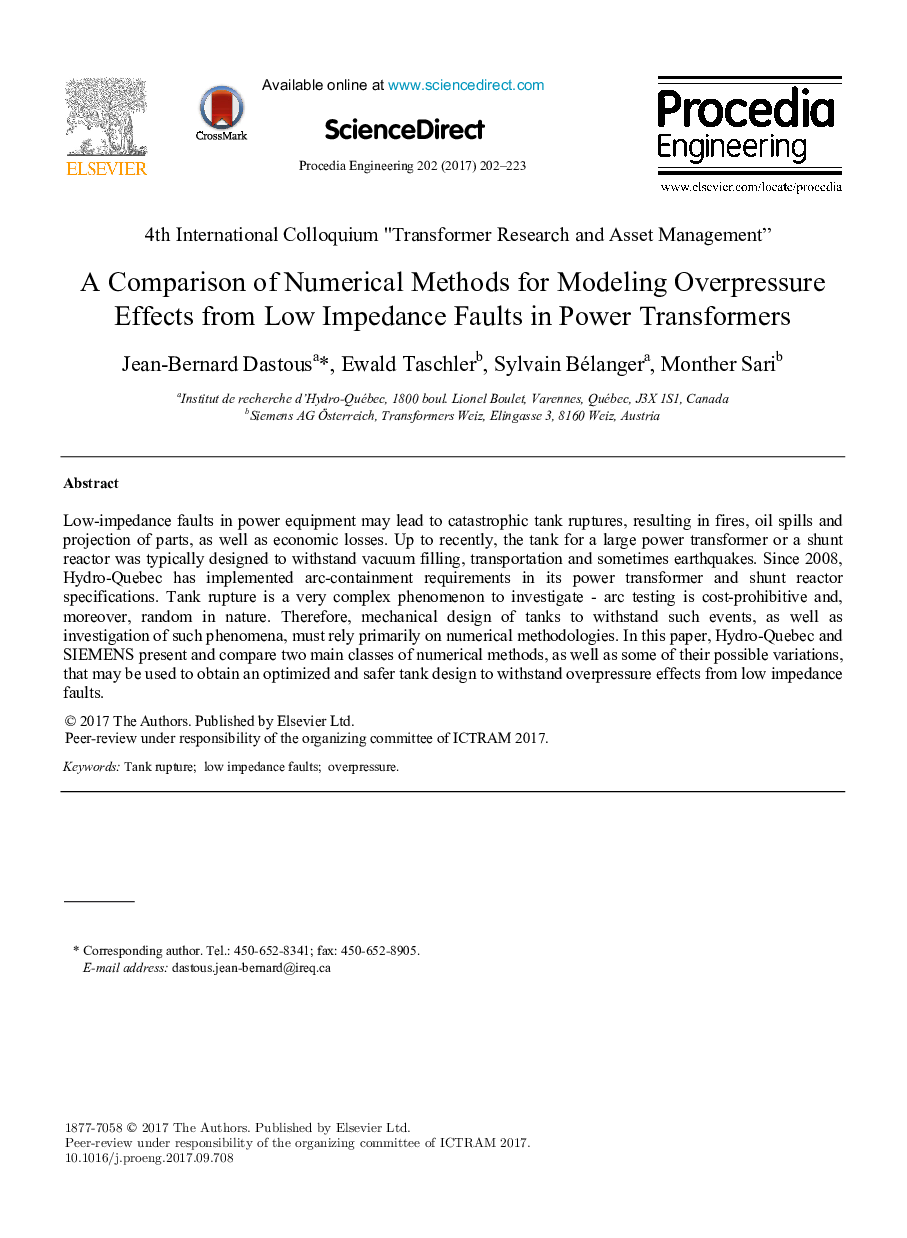| Article ID | Journal | Published Year | Pages | File Type |
|---|---|---|---|---|
| 7228174 | Procedia Engineering | 2017 | 22 Pages |
Abstract
Low-impedance faults in power equipment may lead to catastrophic tank ruptures, resulting in fires, oil spills and projection of parts, as well as economic losses. Up to recently, the tank for a large power transformer or a shunt reactor was typically designed to withstand vacuum filling, transportation and sometimes earthquakes. Since 2008, Hydro-Quebec has implemented arc-containment requirements in its power transformer and shunt reactor specifications. Tank rupture is a very complex phenomenon to investigate - arc testing is cost-prohibitive and, moreover, random in nature. Therefore, mechanical design of tanks to withstand such events, as well as investigation of such phenomena, must rely primarily on numerical methodologies. In this paper, Hydro-Quebec and SIEMENS present and compare two main classes of numerical methods, as well as some of their possible variations, that may be used to obtain an optimized and safer tank design to withstand overpressure effects from low impedance faults.
Keywords
Related Topics
Physical Sciences and Engineering
Engineering
Engineering (General)
Authors
Jean-Bernard Dastous, Ewald Taschler, Sylvain Bélanger, Monther Sari,
